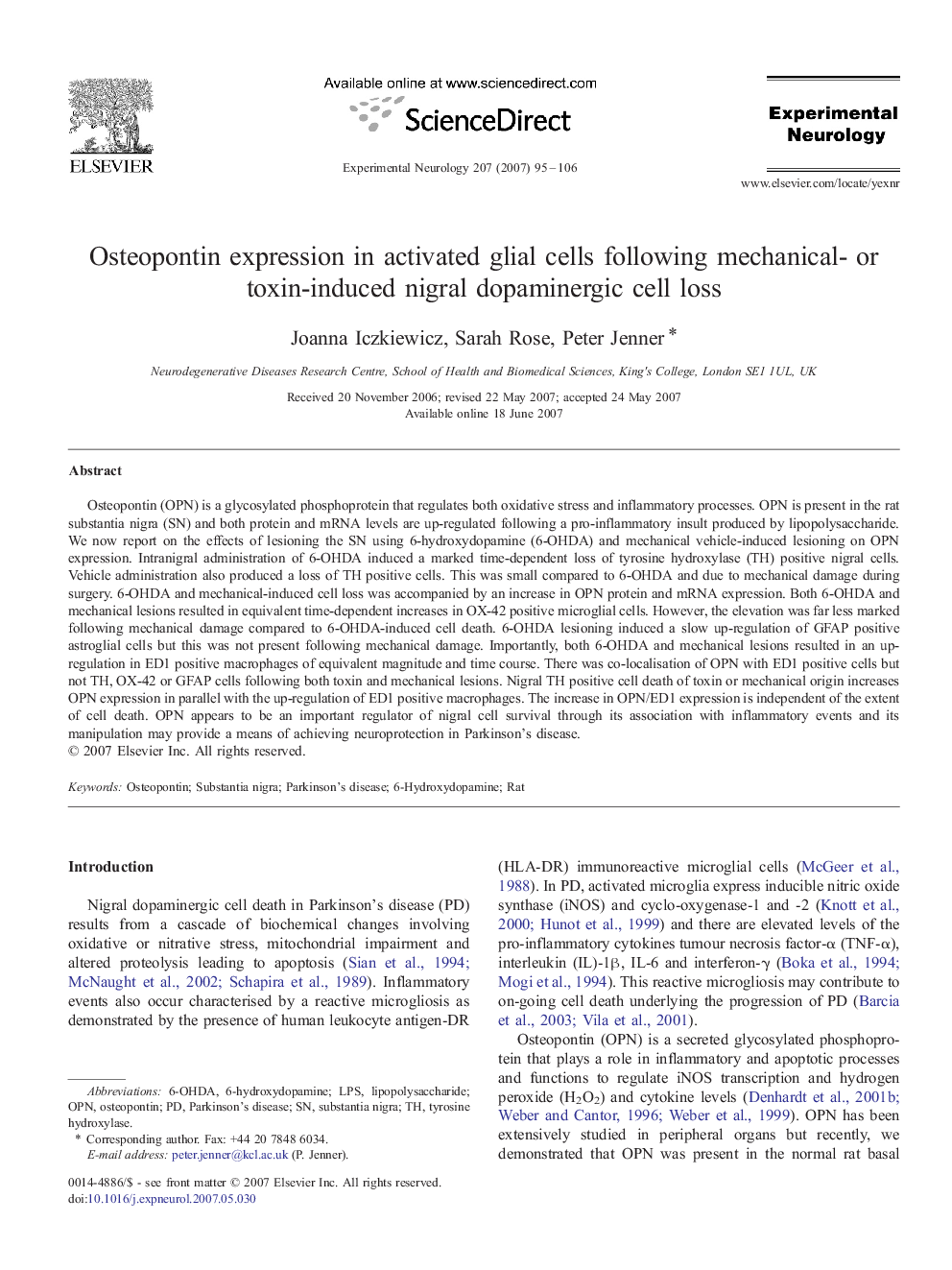| کد مقاله | کد نشریه | سال انتشار | مقاله انگلیسی | نسخه تمام متن |
|---|---|---|---|---|
| 3057021 | 1186586 | 2007 | 12 صفحه PDF | دانلود رایگان |

Osteopontin (OPN) is a glycosylated phosphoprotein that regulates both oxidative stress and inflammatory processes. OPN is present in the rat substantia nigra (SN) and both protein and mRNA levels are up-regulated following a pro-inflammatory insult produced by lipopolysaccharide. We now report on the effects of lesioning the SN using 6-hydroxydopamine (6-OHDA) and mechanical vehicle-induced lesioning on OPN expression. Intranigral administration of 6-OHDA induced a marked time-dependent loss of tyrosine hydroxylase (TH) positive nigral cells. Vehicle administration also produced a loss of TH positive cells. This was small compared to 6-OHDA and due to mechanical damage during surgery. 6-OHDA and mechanical-induced cell loss was accompanied by an increase in OPN protein and mRNA expression. Both 6-OHDA and mechanical lesions resulted in equivalent time-dependent increases in OX-42 positive microglial cells. However, the elevation was far less marked following mechanical damage compared to 6-OHDA-induced cell death. 6-OHDA lesioning induced a slow up-regulation of GFAP positive astroglial cells but this was not present following mechanical damage. Importantly, both 6-OHDA and mechanical lesions resulted in an up-regulation in ED1 positive macrophages of equivalent magnitude and time course. There was co-localisation of OPN with ED1 positive cells but not TH, OX-42 or GFAP cells following both toxin and mechanical lesions. Nigral TH positive cell death of toxin or mechanical origin increases OPN expression in parallel with the up-regulation of ED1 positive macrophages. The increase in OPN/ED1 expression is independent of the extent of cell death. OPN appears to be an important regulator of nigral cell survival through its association with inflammatory events and its manipulation may provide a means of achieving neuroprotection in Parkinson's disease.
Journal: Experimental Neurology - Volume 207, Issue 1, September 2007, Pages 95–106